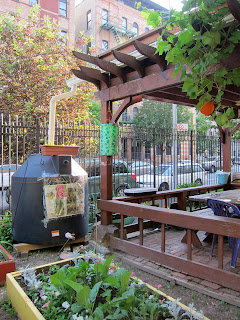Water quality is a major concern not just for rwh systems but for water systems throughout the world. Public water systems as well as municipal systems that have been privatized have to be monitored constantly and on occasion have to issue drinking water alerts. The New York City drinking water supply which is considered one of the finest, best tasting water but the city is building a filtration plant to filter the 10% of the water supply that comes from the highly developed Croton reservoir area at a projected cost of $3 billion.
The quality and cleanliness of natural water systems - our rivers and lakes is also of concern. In fact one of the benefits of rwh is in helping to prevent combined sewer overflows that can happen in a rainfall of as little as one tenth of an inch. Combined sewers handle both sanitary sewage, the waste from our toilets, sinks, washing machines, showers and tubs as well as the rainfall that runs in the city's gutters. In a combined sewer overflow event, the added rainfall overwhelms the capacity of the sewage treatment plant and all of the liquids and solids are sent into the river.
The concern about water quality in rwh systems is something that we have considered and tested. Because of the many variables to consider and the cost of testing we were only able to test water quality at 1 community garden. The results can best be summed up by a quote of mine that appears in the August / September 2011 print issue of Organic Gardening Magazine.
"You can’t really generalize,” he says. You can’t compare an asphalt roof in an urban area with a rural one where birds regularly roost. “The [varying] amount of rainfall and frequency means that if you tested the water in your barrel each time it rained, you would get a different result.” Since testing is prohibitively expensive, Librizzi adds, “I tell folks if they are uncomfortable with watering their edibles with collected rainwater, they should use it only for ornamentals. They will still be saving water.”
So, the swampy smell. Since none of the water was tested, I can only make an educated guess. I think what happened was that we had a couple of significant rains in the spring which meant that a lot of organic material such as pollen, flower parts and seed parts found their way into the tanks. The weather warmed up to heat this mixture and the aerobic environment turned into an anaerobic one much like in a swamp.





It is a pitiful fact that the quality and cleanliness of natural water systems - our rivers and lakes is also of concern. The best paper writing service will research this issue and publish the results as soon as possible.
ReplyDelete